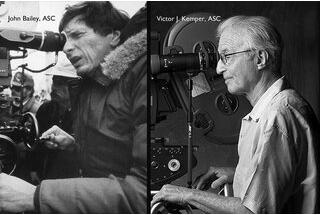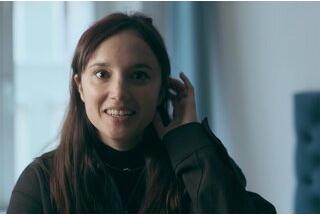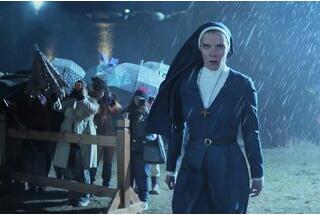Bandidas
The former is black, white and grey semi-tones whereas Bandidas is full of colour, following in the great tradition of the Westerns of our childhood. Saturated colour and landscapes as far as the eye can see. I can quite clearly remember being brought up on spaghetti westerns myself... They influenced my work, especially Sergio Leone and in particular Once Upon a Time in the West. Just as American westerns did, with my reference Pale Rider and its wintry, low-angled lighting, the marked shadows that left Clint Eastwood’s eyes in the shade.
The directors of Bandidas wanted to remain true to the traditional western, among which Butch Cassidy and the Sundance Kid is one of the best examples.
The film was shot using anamorphic techniques and graded digitally throughout. Before the start of shooting, I requested a trial print using the original negative and a print taken from the film derived from the “shot” negative that was digitally graded. I thought I would be able to see a clear difference in the sharpness, the contrast and the rendering of natural colours and that the print from the negative would be better but this was not the case and they looked identical to me.
I used Kodak 5245 50 ISO film for outdoor daylight shots, 250 Daylight for daylight interiors and 5218 500 ISO for night-time shots.
We used two Arricam cameras, the Studio and Lite versions, Cooke and Zeiss anamorphic Technovision lenses (the slight differences in contrast and colour dots were easy to adjust during the digital grading) and an Angénieux zoom solely for the long shots.
Bandidas was filmed entirely in Mexico: the exteriors were done in Durango, where westerns are usually made, and in Mexico City. I could only take Jean-Paul Agostini and Jean-Pierre Mas with me (1st camera assistant and gaffer). The other members of the team were Mexican.
The camera equipment came from Paris (Technovision) and the electrical supplies were obtained on site.
The finishing was done at the Éclair Laboratory and the digital and photochemical gradings were performed by Fabien and Bruno Patin.
I won’t deny that the icing on the cake was filming with Salma Hayek and Penelope Cruz, who are both adorable, easy to get along with and absolutely stunning... and the characters are somewhat reminiscent of parts played by Brigitte Bardot, Claudia Cardinale or Jeanne Moreau in Christian-Jacque’s Les Pétroleuses and Louis Malle’s Viva Maria.
Technical
Film stock: Kodak 5245 50 ISO, 250 Daylight and 5218 500 ISOCamera equipment: Technovision, Paris
Cameras: Arricam Studio and Lite
Cooke and Zeiss anamorphic Technovision lenses, Angenieux zomm for long shots
Processed in Mexico City
Printed by Eclair, Paris
Digital and photochemical graders: Fabien et Bruno Patin
 En
En
 Fr
Fr






